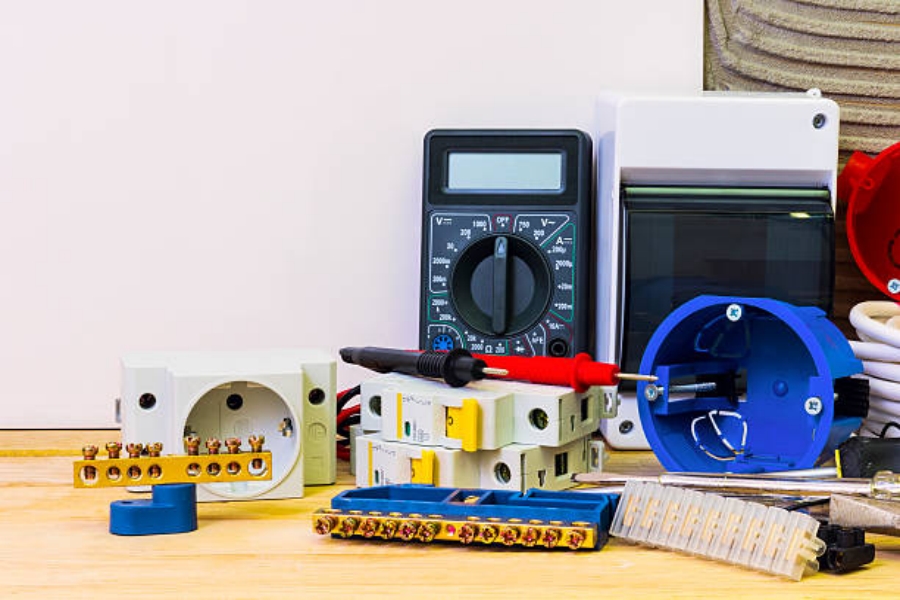Table of Contents

electric heater switches: An Overview
If you're in search of an efficient and eco-friendly way to heat a room, an electric heater is an excellent option. Electric heaters come in different shapes and sizes, but one thing remains the same – they all have an electric heater switch. An electric heater switch is the controlling component of the heater, allowing you to turn it on and off. In this article, we will delve into the different aspects of electric heater switches, including types, features, and benefits.
The Different Types of Electric Heater Switches
Electric heater switches are primarily categorized based on their functionality, design, and location. The two primary types of electric heater switches are:
- On/off switch: The simplest type of electric heater switch. It turns the heater on and off, and usually comes with a power indicator light.
- Thermostat: This type of electric heater switch allows you to set a temperature and then turns the heater on and off to maintain that temperature.
Features of Electric Heater Switches
Electric heater switches come with different features that enhance their convenience and functionality. Some of the most common features include:
- Adjustable temperature control: This allows you to select the desired temperature and maintain it for efficient heating.
- Programmable timer: This feature enables you to schedule the heater to turn on and off at specific times, helping you save energy and reduce costs.
- Fan-only mode: Some electric heaters have an option to switch off the heating element and operate the unit as a fan-only mode, providing ventilation in a room.
- Safety features: The modern electric heater switches come with a range of safety features, including overheat protection, tip-over switch, and automatic shut off, ensuring that they operate safely and avoid any overheating or short-circuiting.
Benefits of Electric Heater Switches
Electric heater switches are highly beneficial to your home and your wallet. Below are some reasons why it's a good idea to install an electric heater switch:
- Efficiency: Electric heaters are known for their high efficiency levels, making them a great option for heating up small spaces quickly.
- Cost-effective: Electric heaters consume less energy and hence save you a lot on electricity bills.
- Easy installation: Electric heaters and switches are easy to install, and you can do it yourself in just minutes.
- Flexible heating options: An electric heater switch allows you to adjust the temperature as per your preference, making it a versatile option for different weather conditions.
Factors to Consider When Choosing an Electric Heater Switch
Before you make a purchase, there are several factors to keep in mind, such as the size of the room, your budget, and the wattage of the heater. Below are some other things to consider:
- Type of heater: Determine the kind of heater that'll suit your needs, whether radiant, convection, halogen or fan-forced heater.
- Location of heater: Choose the appropriate location of where to place the heater, noting down the proximity to the electric socket and ample space to avoid any accidents.
- Material of Switch: The switch should be made from high-quality materials that can handle the intense heat and continue to function correctly over many years of use.
- Design: The design of the electric heater switch is less important than its functionality; however, you may still want to choose a color or style that fits your taste and the room's décor.
Installation of Electric Heater Switch
Installing an electric heater switch is a simple process that does not require any advanced skills or knowledge. Follow these steps:
- Turn off the power to the socket to avoid electrical shocks.
- Disconnect the wires from the old switch and remove it from its mounting box.
- Connect the wires to the new switch based on the manufacturer's instructions.
- Attach the new switch to the mounting box carefully.
- Restore power, test the switch and heater, and you're good to go.
Common Issues with Electric Heater Switches
There are a few common issues that people encounter with electric heaters and switches. Here are some of these issues, along with their solutions:
- No power coming to the switch: Check the electrical source's outlet whether there's a problem with receptacles.
- Thermostats not working: If the thermostat is not reading the correct temperature, it may need calibration or replacement
- Overheating: Electric heaters tend to overheat when they are placed close to flammable objects, or there's not enough ventilation. Ensure there's ample space around the heater.
- Fuse or circuit-breaker issues: In some instances, a blown fuse or circuit breaker can cause an electric heater switch not to work correctly. Check the electrical panel and replace the necessary components.
The Bottom Line
Electric heater switches are essential components that control the functioning of electric heaters. They come in various designs and types, depending on their features and functionality. When choosing an electric heater switch, consider factors such as the size of the room, location, budget, material, and design.
